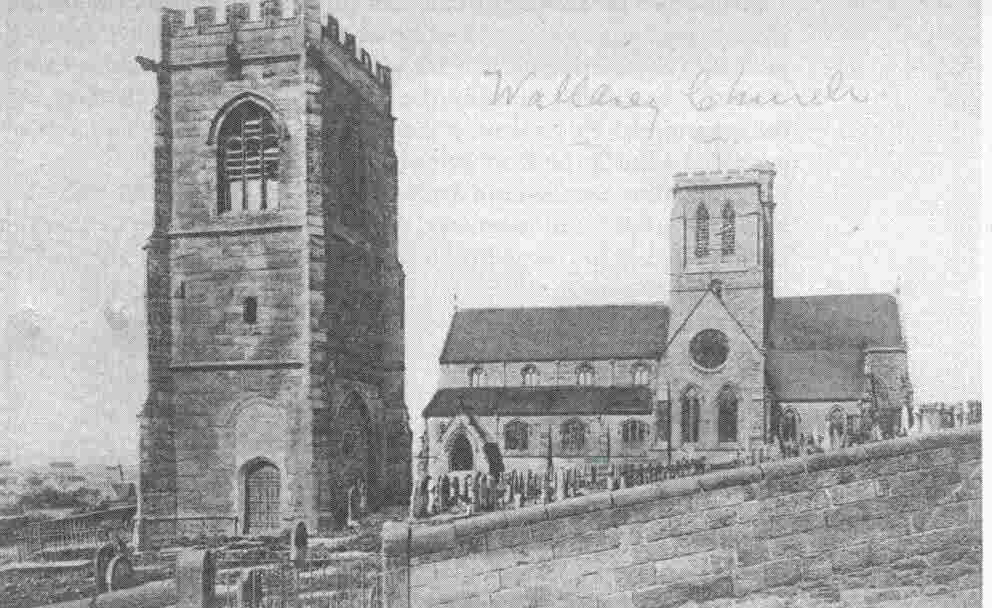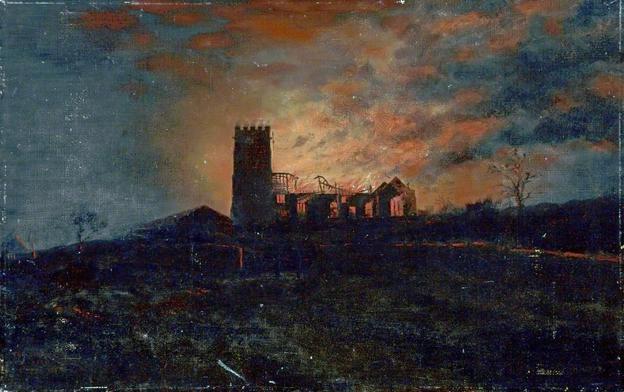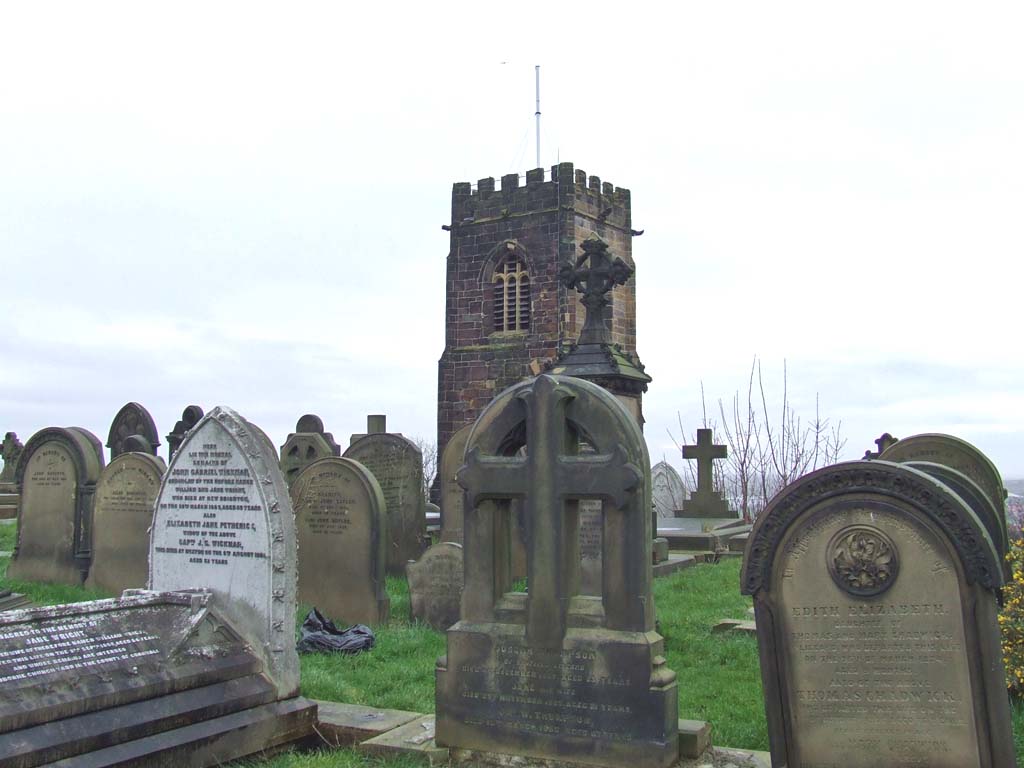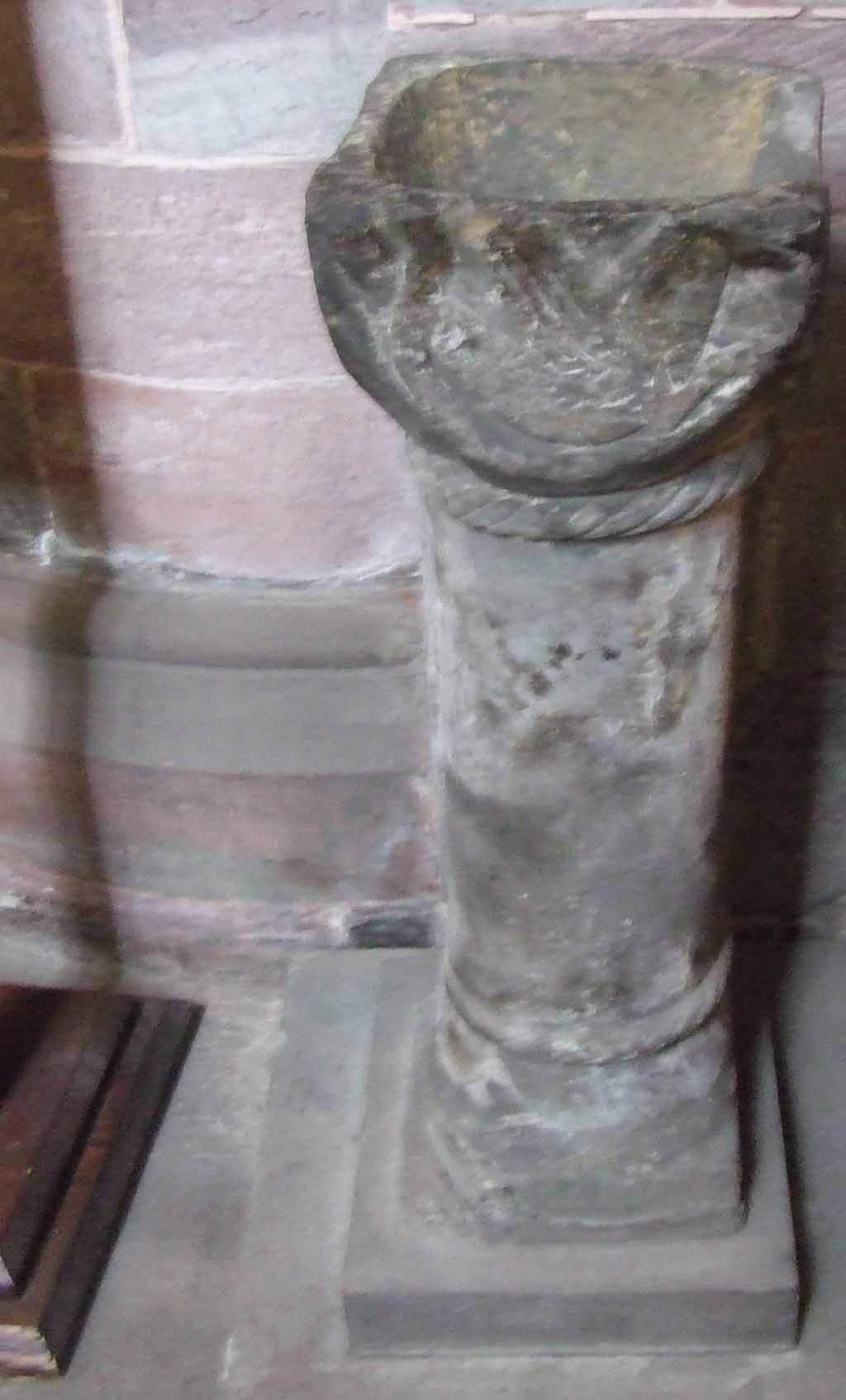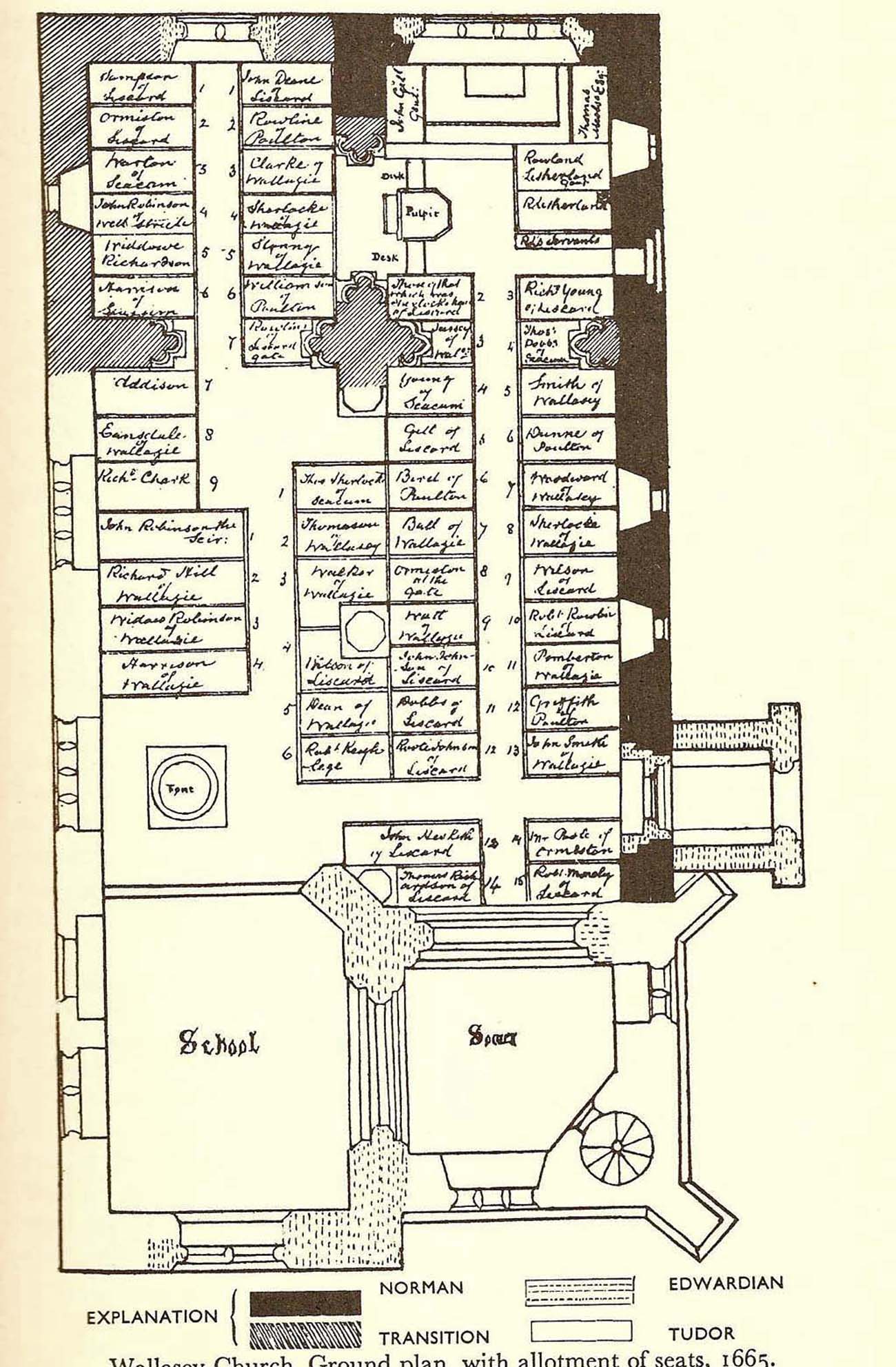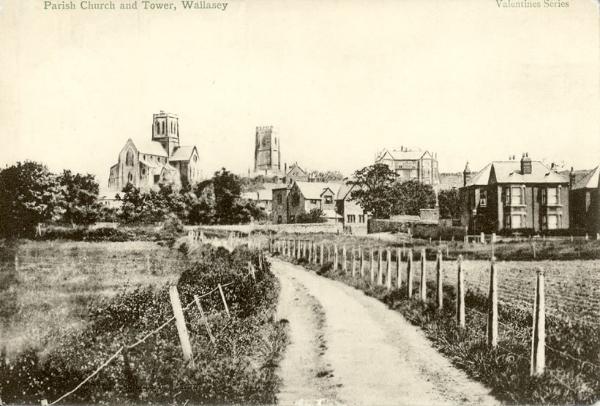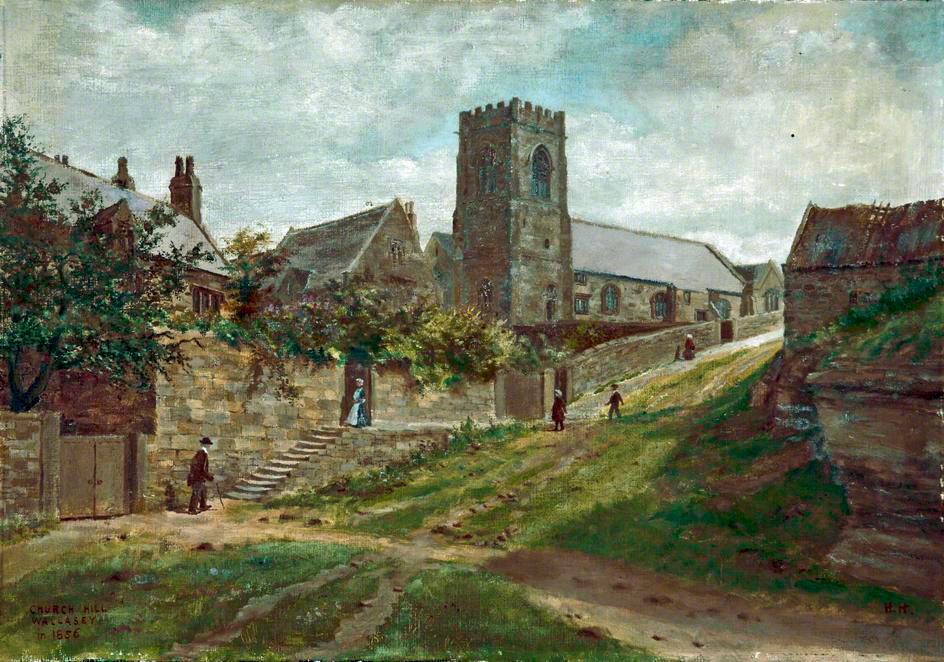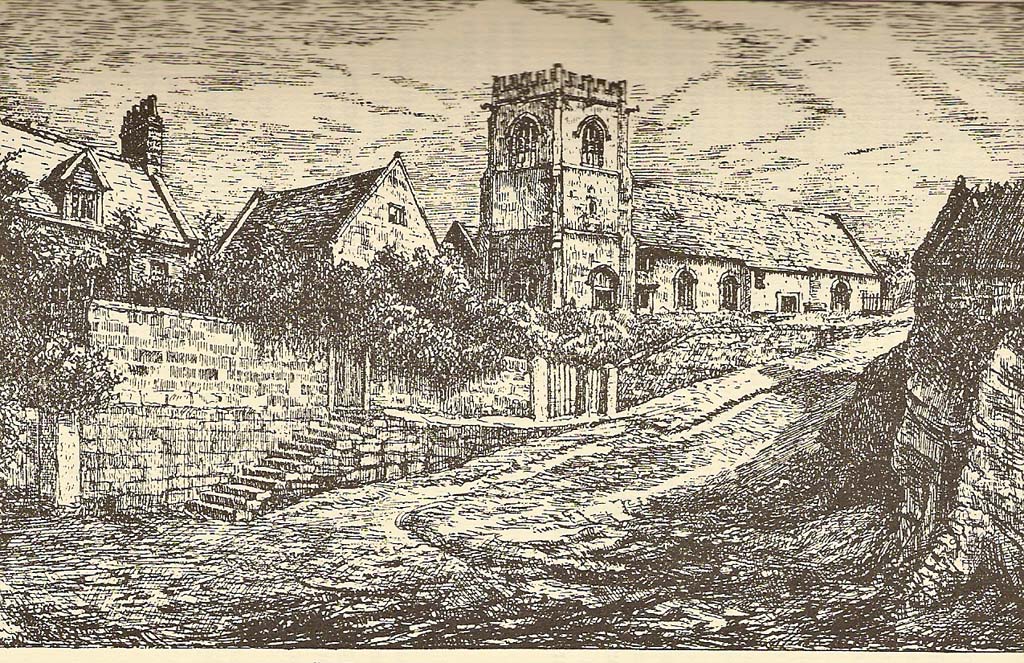|
The following is a reprinted account direct from the microfilm of the original story which I had copied into a notebook years ago when a teenager! EXTRAORDINARY FIRE YESTERDAY - WALLASEY CHURCH BURNT DOWN (1857)
When a teenager on Merseyside, I had heard of an excellent microfilm library in Liverpool, which housed old local newspapers like the Mercury and Daily Post. I had been wondering for a while what had happened to the old Wallasey Parish Church, the ruined stumps of which still rest on the present site in Wallasey Village. I was intrigued and went over to Liverpool on the ferry boat to see for myself. I was looking through old film of the Liverpool Daily Post. I had a slight idea of the dates so investigated for myself. The result was an excellent account of the traumatic night - February 1st 1857. This report was printed in the Liverpool Daily Post Feb 2nd 1857, on page 5. Following on from this, and connected with this church, is the story, also taken from the Liverpool Daily Post, of an account of the wrecking of the packet ship Pennsylvania, which had set sail from Liverpool en route to New York on Christmas 1838. Cornwall is traditionally the region of fantastic tales of wreckers and smugglers, but Wallasey was just as notorious, maybe worse! I live there no longer, having been away with HM Forces, and now settled in Sutton Coldfield.
The Parish Church of Wallasey, an ancient edifice, was utterly destroyed by fire yesterday forenoon. We have made enquiries respecting the catastrophe, and the following is the result. It appears that yesterday morning, so early as 2 o'clock, an inhabitant of the village, on looking through his bedroom window, discovered smoke and flame issuing from the church, and immediately communicated the fact to the rector, the Rev P Haggit. The Rector and several of the parishioners proceeded at once to the spot, and found that the flames were breaking through the windows, and the fire presented an alarming aspect. A messenger was dispatched for the Birkenhead Fire Brigade and engine that being the nearest from which effectual assistance could be had in such an emergency. In the meantime the flames spread rapidly, the persons present being unable to do anything towards arresting their progress. From every window the fire burst forth, and burnt with such brilliancy as to be visible from a distance of several miles. In a brief period the roof fell in, shortly afterwards the fire brigade from Birkenhead arrived at half past three, but even then any efforts they could make were inoperative from the want of a supply of water. After some time water was obtained and the engine got into play, but it was then too late to make any effectual efforts towards arresting the progress of the fire. The body of the church was completely gutted and presented nothing but a heap of smouldering ruins. The register books and some documents of value connected with the church were the only things saved from the conflagration. The organ created a few years ago, and which cost three hundred guineas, was totally consumed, also a handsome font, presented to the church by Mr Chambers. The church contained a set of six bells, which fell with a tremendous crash during the progress of the fire. Only two of the bells remain entire, the remainder being broken to pieces. The church underwent very extensive improvements a year or two ago, and a large sum of money was expended. A new roof was added, and the organ and the font previously alluded to were introduced at the same time. As to the origin of the fire there is little doubt. The fires connected with the flues for heating the building were lighted as usual about eight on Saturday evening, and it is supposed that some of the flues, becoming overheated, had ignited the flooring, and thus led to the fatal results which followed. The loss is covered by insurance in the Sun Fire office to the extent of about £2000. The church was one of the oldest ecclesiastical edifices in the neighbourhood. The tower bears the date of 1530, although the church itself was rebuilt about 100 years ago. The ruins constitute an interesting sight; and during the whole of yesterday crowds went to view the desolation.
The tower alone was left standing. after some repairs it remains, in memory of one James Harrison who died in 1891. Below is an image taken by me in 2007.
The present church of St Hilary was consecrated on 28th July 1859. The stone was freely donated by a Mrs Mary Ann Maddock from her quarry in Rake Lane. This was then the site of bowling greens. The windows were provided in the form of gifts, as was a new font. In 1895 the chiming clock was added to the new tower in memory of William Chambres who died at Wallasey Grange on 28th August 1893. The bells were made in Loughborough and bore nothing but the makers name, Taylor & Co. (Fragments of the old bells were cast into the new ones.) The original Norman font which apparently now stands in St Lukes, Poulton, remained on site up to 1760 and was then placed in the rectory garden till 1834. It was then replaced in the church until 1856 and then removed again, to the rectory garden. 30 years later, it was again placed in the now, new church. When St Lukes was built in Poulton, it found its way there! To the rear of the font there is inserted a section of newer stone. It is rumoured that, in Cromwell's time, a piece was knocked out to use as a horse trough. Presume the piece was knocked out to provide entrance for a supply? In 1955 a new east window was commissioned to replace that which had been damaged during German air raids in WW2. The new window is of Middlesex origin (E Liddle Armitage). First recorded rector of Wallasey is Thomas de Waley in 1170. Thomas Fletcher was rector from 1579 - 1580 to 1619. His marriage is recorded "at Woodchurch to Catherine Benet of Saughall Massie on 22nd February 1597 or 1598. She was his second wife. The next rector of Wallasey was actually a Devon man, George Snell, incumbent to 1635. He was married to Lydia, sister of the Bishop of Chester, also a Devon man. In 1631 he refused a knighthood claiming that being "in holy orders and did not hold a lay fee". Narrowly escaping a fine for refusal. He was a determined Royalist at a time of Republican fervour. He actively preached against Parliament and sent a troop of Musketeers to "harass the Parliamentary troops at Nantwich". His tomb is in St Mary's on the Hill, Chester enscribed that "Archdeacon of Chester who by the lawlessness of his times, reduced to lay communion, died a private man, 5th February 1655-6. (Unsure why two years are given, maybe it was hard to read.) The next Rector was, not surprisingly, a Puritan. Randolph Adams who was possibly curate under Snell. Charles Aldcroft was Rector 1718 - 48. He married a widow and for some reason lived in a separate house to his wife, both in Chester, as he did not wish his marriage public knowledge. He paid very little attention to Wallasey whilst in office. He had 3 sons. Reginald Betts is the last Rector of note, being the holder of a Military Cross from his WW1 service. He was Rector 1937 - 1942.
|
